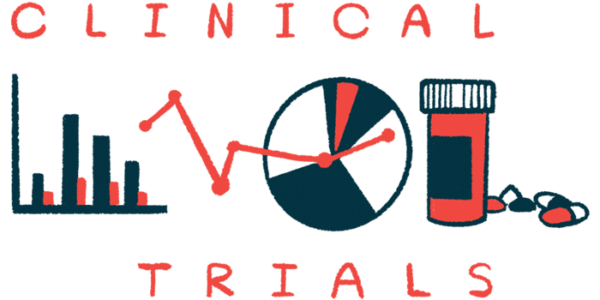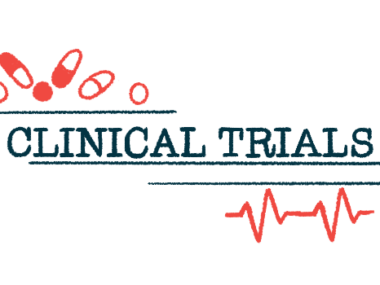Tobevibart, elebsiran can suppress hepatitis D virus: Phase 2 data
Treatment helps normalize liver damage markers in chronically infected adults
Written by |

Vir Biotechnology’s investigational therapy tobevibart, used alone or in combination with another company candidate called elebsiran, can reduce hepatitis D virus (HDV) levels and normalize liver damage markers in adults with chronic hepatitis D, or hepatitis delta.
That’s according to preliminary data up to one year from the ongoing Phase 2 SOLSTICE clinical trial (NCT05461170), which may still be recruiting adults, ages 18-69, with chronic hepatitis D at sites in Europe and New Zealand.
The findings were discussed in a recent company webcast and will be presented by Tarik Asselah, MD, PhD, head of the viral hepatitis unit at INSERM UMR1149, France, at the 2024 congress of the European Association for the Study of the Liver, being held June 5-8 in Milan, Italy.
Tobevibart, elebsiran could be ‘transformative treatment option’ for hepatitis D
“The preliminary data from our Phase 2 hepatitis delta trial provide compelling evidence that either tobevibart and elebsiran in combination or tobevibart as monotherapy [single therapy] could represent a transformative treatment option for individuals living with this devastating disease,” Marianne De Backer, PhD, Vir’s CEO, said in a company press release.
“Recognizing the critical need for improved treatment options, we are committed to working closely with regulatory authorities to determine the next steps to bring these promising candidates to patients in need as expeditiously as possible,” De Backer said.
Additional data from SOLSTICE are expected by year’s end.
Hepatitis, referring broadly to inflammation of the liver, is most often caused by a viral infection. Of the hepatitis viruses, HDV is unique in that it can only infect people who already have hepatitis B, another form of viral hepatitis.
Chronic infections with the hepatitis B virus (HBV) can lead to serious consequences such as irreversible liver scarring and damage (cirrhosis), liver failure, and liver cancer. And the risk of these life-threatening consequences is even higher when a hepatitis B patient subsequently develops hepatitis D.
More than 40% of these patients develop cirrhosis and “more than 50% … die within 10 years of diagnosis,” De Backer said in the webcast.
Chronic hepatitis D poses ‘significant threat to millions worldwide’
“As the most severe form of viral hepatitis, chronic hepatitis delta poses a significant threat to millions worldwide,” Asselah said in the release. “Despite the urgent need for effective and convenient therapies, the options for patients remain limited.”
Tobevibart (VIR-3434) is an antibody designed to neutralize HBV and HDV and prevent them from entering liver cells. Elebsiran (VIR-2218), originally developed by Alnylam Pharmaceuticals, is an RNA-based therapy that works to limit production of HBV proteins, including hepatitis B surface antigen, which is required for HDV’s life cycle. Both therapies are administered through under-the-skin injections.
The company believes the two therapies might work together to suppress HDV infection and prevent its associated complications.
SOLSTICE is evaluating the safety and efficacy of tobevibart, when used alone or in combination with elebsiran, in up to 124 adults with chronic hepatitis D.
One group of six participants received tobevibart or elebsiran monotherapy for three months before starting them together (the rollover group), and a group of 32 patients directly started the combination therapy (de novo group). In these groups, both therapies are being administered once a month for up to 96 weeks (nearly two years).
A third group, comprising 33 participants, are being treated with tobevibart alone, once every two weeks for 96 weeks.
Study testing virologic response, normal ALT levels after 6 months
The study’s main efficacy goal is to evaluate the proportion of patients achieving both a virologic response and a level normalization of a liver damage marker called alanine transaminase (ALT) after about six months. Virologic response was defined as blood HDV levels below the limit of detection or a certain level drop from the start of the study.
Recently presented data concerned interim findings from the six people in the rollover combination group, 27 patients in the de novo combination group, and 26 who received tobevibart alone.
Up to nearly a year of data from the rollover combination group showed all six patients continued to have a virologic response at last follow-up, and three (50%) also achieved ALT normalization, meeting the main efficacy outcome.
All 27 patients starting directly on the combination treatment achieved a virologic response after three months, and 44% met the main efficacy goal. All of the 11 patients with six-month data maintained a virologic response, and seven (64%) met the primary efficacy outcome. More than half (55%) had no detectable HDV in their blood.
Similar rates of virus suppression and ALT normalization were observed between patients without cirrhosis and those with compensated cirrhosis.
In the tobevibart monotherapy group, 73% of patients achieved a virologic response, 54% showed ALT normalization, and 38% achieved both outcomes after three months. Among the 11 patients with six-month data, 55% were virologic responders, 64% achieved ALT normalization, and 55% reached the main efficacy goal.
The treatments were generally well tolerated, with most adverse events being temporary and mild or moderate in severity. The most common events were flu-like illness, chills, joint and muscle pain, and fever.
“The impressive reduction in HDV [levels] observed in the preliminary SOLSTICE trial data surpasses any previous therapy reported to date and highlights the promise of tobevibart and elebsiran in addressing this critical unmet need [for effective therapies],” Asselah said.









